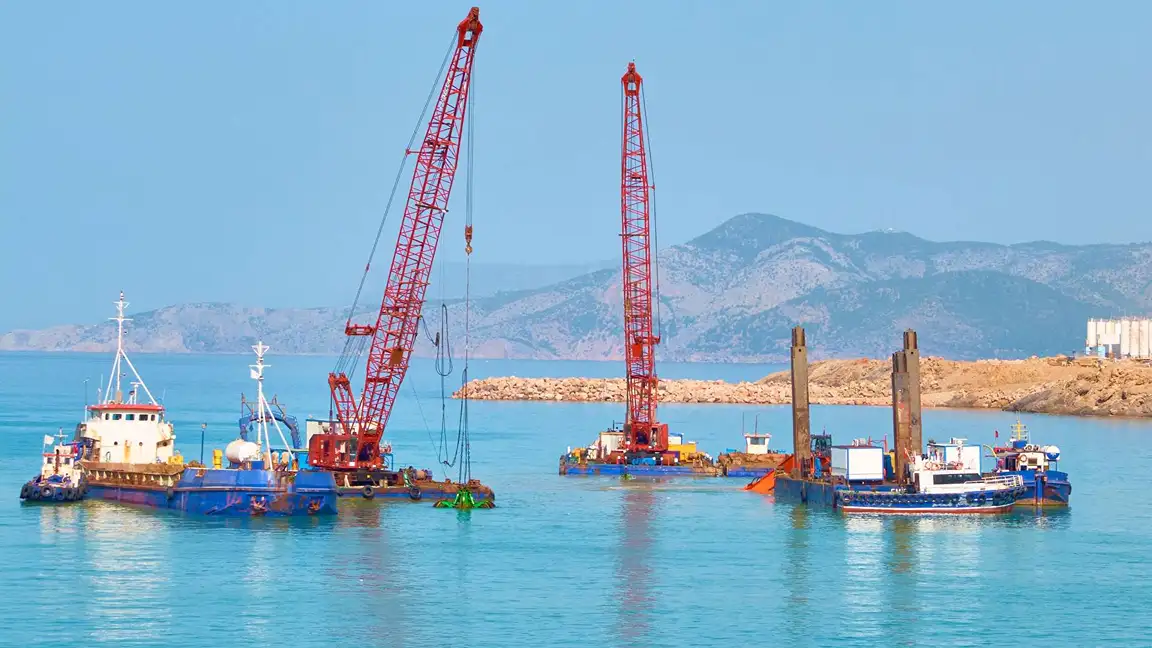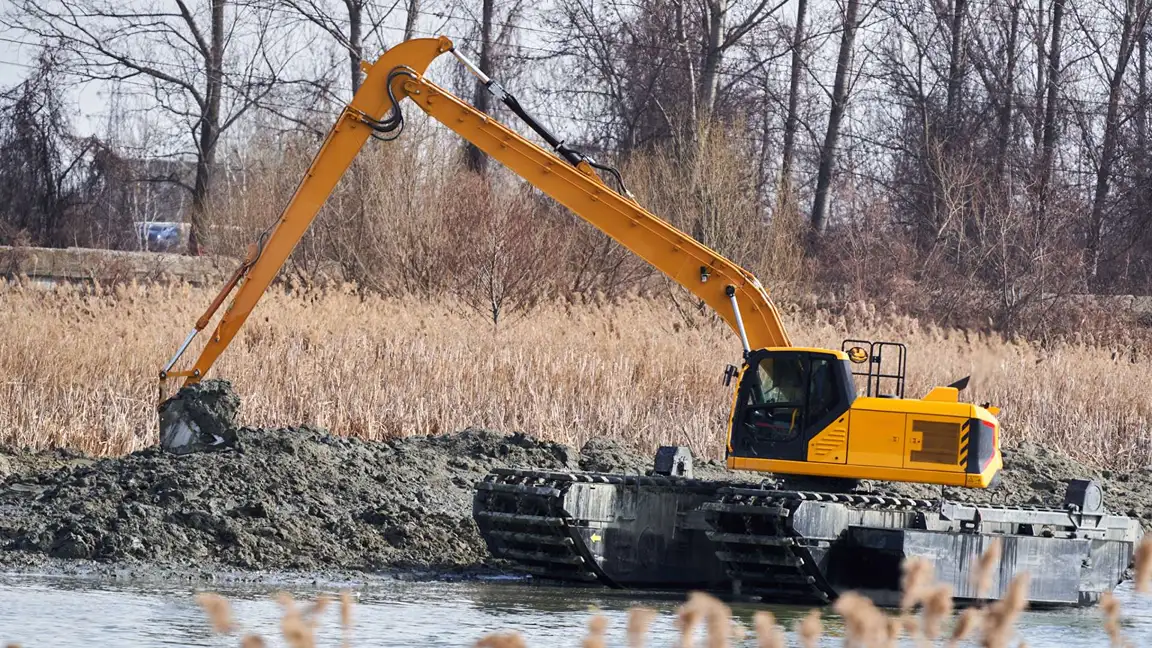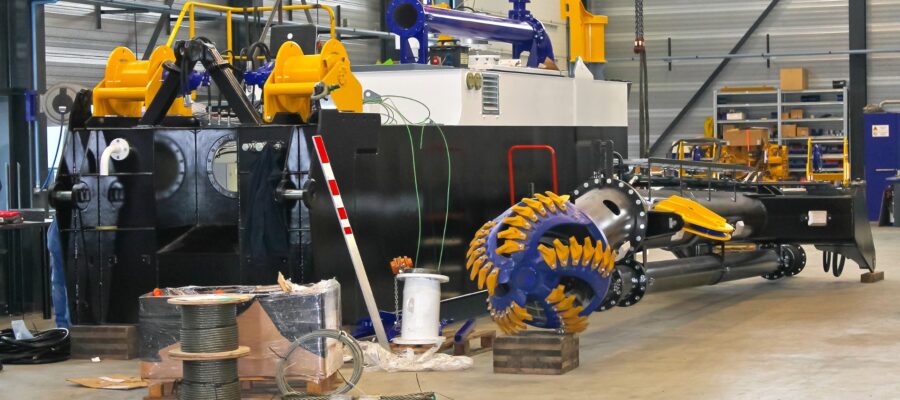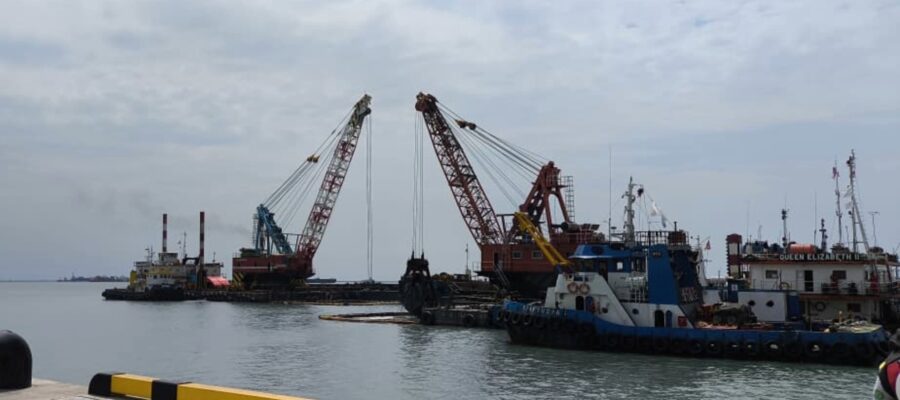
Introduction
In environmental and civil engineering, few processes are as essential as dredging. It involves removing sediments, debris, and other materials from the bottom of lakes, rivers, harbors, and other water bodies. This process plays a vital role in maintaining aquatic environments, supporting navigation, and enabling coastal protection.
A clear understanding of the dredging definition helps in appreciating its importance across infrastructure and sustainability projects. Equally important is understanding the dredge’s definition, which refers to the machines used in these operations. These specialized tools come in various types, designed for different materials and project scales.
One widely used technique is hydraulic dredging. The hydraulic dredging definition refers to using water to turn sediment into slurry and transport it via pipelines to a disposal or reuse site. This method is favored for large-scale work and areas needing minimal environmental disturbance.
As urban development grows and coastal areas face increasing environmental pressures, dredging continues to play a critical role. Whether you’re a policymaker, engineer, or environmentally aware citizen, understanding the principles and impact of dredging supports better decisions for managing water resources.
1. What Is Dredging? A Clear Dredging Definition
The most straightforward dredging definition is the removal of sediments and debris from the bottoms of lakes, rivers, harbors, and other water bodies. Sediments such as sand, silt, clay, and organic matter naturally accumulate over time due to processes like erosion and water flow. If left unmanaged, this buildup can cause shallow channels, navigational hazards, decreased water storage capacity, and harm to aquatic ecosystems.
Dredging is the engineered process designed to remove these materials to restore or improve the functionality of the water body. Understanding the dredging definition is essential to appreciating its importance in maintaining waterways and ecosystems.
When discussing dredging, the dredge’s definition refers to the specialized equipment and machinery used to perform this task. Dredges come in various types and sizes, each suited to specific conditions and project requirements. For example, hydraulic dredging involves a technique where sediment is loosened and transported as a slurry through pipelines—this is known as the hydraulic dredging definition. It is particularly effective for large-scale operations and sensitive environments where minimizing disruption is important.
Dredging serves multiple purposes in environmental engineering, including deepening navigation channels to ensure the safe passage of vessels, preventing flooding by maintaining river and reservoir capacities, and removing pollutants or contaminated sediments to protect aquatic life. Additionally, dredging supports the restoration of wetlands, beaches, and coastal habitats, demonstrating that dredging is not simply a construction activity but a vital component of waterway maintenance and ecosystem rehabilitation.
In summary, understanding the dredging definition and the dredge definition provides a foundation for recognizing how this process contributes to environmental health and infrastructure support.
2. Understanding Dredges: Definition and Equipment Types
Dredging projects rely on specialized equipment tailored to underwater excavation. The definition refers to machines or vessels designed to remove sediment from the bottom of water bodies and relocate it for disposal, reuse, or environmental restoration. These machines vary depending on the site’s conditions and project needs.
Mechanical Dredges
Mechanical dredges remove sediment using physical force. They’re ideal for removing compact materials or debris with precision.

- Clamshell Dredge: Operates with a hinged bucket that scoops sediment, often used in ports and harbors.
- Backhoe Dredge: A floating excavator suited for nearshore excavation or shallow projects.
These types of equipment support the broader dredging definition, which includes various methods for managing underwater sediment.
Hydraulic Dredges
Hydraulic dredges are commonly used in large or continuous operations. The hydraulic dredging definition describes a method that uses suction to create a slurry of sediment and water, which is pumped to another location.
- Cutter Suction Dredge (CSD): Equipped with a rotating cutter head to loosen material before suction transport.
- Trailing Suction Hopper Dredge (TSHD): Ideal for deepwater dredging, storing sediment in an onboard tank.
The hydraulic dredging definition emphasizes efficiency in moving large volumes over long distances, making it essential for port maintenance and coastal nourishment.
Choosing the right dredge involves evaluating sediment type, depth, environmental impact, and proximity to shore. As technology advances, so does the dredge’s definition, expanding the tools available for sustainable dredging operations.
3. The Dredging Process Step by Step
Dredging is a structured process that involves multiple stages to ensure effectiveness and environmental responsibility. Here’s a streamlined look at how it works:
Step 1: Site Assessment
The dredging process begins with thorough hydrographic surveys, sediment sampling, and environmental assessments. These evaluations provide a detailed understanding of the waterway’s current condition, sediment composition, and potential environmental sensitivities. The dredging definition typically refers to the removal of underwater sediments that block navigation channels or contribute to ecological degradation, making this initial assessment critical for effective planning and minimizing environmental impact.
Step 2: Project Design and Permitting
Following the assessment, engineers develop a detailed project design that includes selecting the appropriate dredging method, equipment, and strategies for sediment placement or disposal. Securing permits from environmental and government agencies is a vital step to ensure regulatory compliance and environmental protection. At this stage, a clear understanding of the dredge’s definition—referring to the specialized tools and machinery used in dredging operations—is essential for choosing the right equipment and optimizing project outcomes.
Step 3: Mobilization
During mobilization, all necessary dredging equipment is transported to the project site, and temporary infrastructure such as work platforms, storage areas, or access roads may be established. This phase is crucial for ensuring that everything is properly positioned and ready before excavation begins, minimizing delays and maximizing operational efficiency.
Step 4: Excavation and Removal
The core of dredging involves sediment extraction, which can be performed using mechanical or hydraulic methods. The hydraulic dredging definition describes a technique where high-pressure water is used to loosen sediments, creating a slurry that is then pumped through pipelines to disposal or reuse areas. This method is favored for its speed and efficiency, especially when handling large volumes over long distances.
Step 5: Transport and Placement
After removal, the dredged material is carefully transported to designated disposal sites or repurposed for beneficial uses such as beach nourishment, wetland restoration, or habitat creation. This step reflects the broader dredging definition, highlighting the importance of responsible sediment management to support environmental sustainability and project goals.
Step 6: Post-Project Monitoring
Once dredging concludes, the site is monitored to assess success and detect any environmental impact. Reviewing results also informs future use of various techniques and tools, including refinements to the dredge’s definition.
Each step is crucial to maintaining compliance, reducing environmental harm, and achieving long-term dredging goals. Whether mechanical or guided by the hydraulic dredging definition, these operations must be executed with precision.
4. Hydraulic Dredging: Definition and Role in Large-Scale Projects
Hydraulic dredging is widely used in large-scale sediment removal due to its speed and efficiency. The hydraulic dredging definition refers to the process of loosening underwater sediment, mixing it with water to form a slurry, and transporting it through pipelines using suction pumps.

How It Works
A cutter head or water jets break up sediment, which is then mixed with water. The resulting slurry is pumped through submerged or floating pipelines to designated sites.
This method fits within the general dredging definition—the removal of sediments from the bottom of water bodies to improve navigation or restore ecosystems. The dredge’s definition refers to the equipment or vessels used in this process, often designed for high-capacity and continuous operation.
Key Applications
- Deepening navigation channels
- Coastal nourishment
- Removing contaminated sediments
- Restoring wetlands and marshes
These applications demonstrate the versatility and effectiveness of hydraulic dredging in both environmental and commercial projects.
Pros and Cons
Advantages
- Fast material removal
- Suitable for large volumes and long distances
- Less disruptive in open water
Limitations
- High water content in the slurry
- Requires dewatering for reuse
Hydraulic dredging is commonly used in port maintenance and river restoration, where moving large amounts of sediment quickly is essential. As dredging technology evolves, so does the dredge’s definition, expanding the range of tools used in efficient and responsible dredging projects.
5. Environmental Importance of Dredging
The dredging definition goes beyond infrastructure maintenance to include critical environmental benefits. Proper dredging plays a key role in addressing ecosystem degradation, polluted waterways, and coastal erosion.

Key Environmental Benefits
- Ecosystem Restoration: Dredging removes silt and pollutants that can smother aquatic habitats, allowing species to recover and ecosystems to flourish.
- Flood Risk Reduction: Maintaining waterway and reservoir capacity reduces flooding risks during heavy rains or snowmelt.
- Wetland and Beach Replenishment: Dredged material is often reused to rebuild shorelines, stabilize coasts, and mitigate the effects of rising sea levels.
- Water Quality Improvement: Removing excess nutrients and organic matter helps combat eutrophication and enhances oxygen levels in water bodies.
Achieving these benefits requires thorough sediment testing and adherence to environmental best practices during dredging operations. Understanding the dredge’s definition is essential for selecting appropriate equipment and methods. The hydraulic dredging definition, in particular, highlights techniques that can minimize disturbance while maximizing sediment removal efficiency.
By integrating these concepts, dredging serves as an important tool for both environmental restoration and sustainable water management.
6. Regulations and Environmental Safeguards
Dredging, while beneficial, must be conducted responsibly to avoid ecological harm. Most countries have regulatory frameworks to guide dredging activities, often requiring permits and environmental impact assessments.
Regulatory Considerations:
- Water quality standards and turbidity controls.
- Protection of sensitive species and habitats.
- Sediment characterization for contaminants.
- Public consultation and stakeholder engagement.
Environmental Safeguards:
- Use of silt curtains or barriers.
- Timing work to avoid spawning or nesting seasons.
- Real-time monitoring of sediment dispersion.
- Strategic placement of dredged materials.
These measures help balance the technical goals of dredging with the need to preserve natural ecosystems and community well-being.
7. Challenges and Considerations in Dredging Projects
While the dredging definition highlights its critical role in waterway management, dredging projects come with several challenges. Engineers and planners must address technical, environmental, and logistical issues to ensure success.
Common Challenges
- Sediment Variability: Unexpected debris or contaminated materials can disrupt dredging operations and require adjustments in equipment or method.
- Weather and Tides: Marine dredging is highly dependent on favorable weather and tidal conditions, which can delay work.
- Budget Overruns: Equipment breakdowns, permitting delays, and community opposition may increase project costs beyond initial estimates.
- Disposal Dilemmas: Finding environmentally safe and cost-effective ways to place or reuse dredged material is often complicated.
Understanding the dredge’s definition is essential to selecting the right equipment and techniques for site conditions. The hydraulic dredging definition also plays a role in planning, as this method requires careful management of slurry transport and dewatering. Effective project planning, risk management, and flexible design strategies are key to overcoming these hurdles and achieving sustainable dredging outcomes.
8. Emerging Trends and Innovations in Dredging
The dredging definition is evolving alongside technological advancements that enhance safety, efficiency, and environmental sustainability. Modern dredges now incorporate automation and smart systems that improve operational precision and reduce human labor.
Current Trends
- Automation and Remote Operation: GPS-guided dredges and autonomous vessels enable precise dredging with minimal human intervention.
- Eco-Dredging Techniques: New tools focus on low-turbidity operations and use biodegradable additives to lessen ecological impact.
- Sediment Reuse: There is growing interest in repurposing dredged materials for construction, agriculture, and habitat restoration.
- Digital Monitoring: Real-time sensors and data dashboards provide enhanced project oversight and help ensure regulatory compliance.
The hydraulic dredging definition is also expanding as these innovations make suction dredging more efficient and environmentally friendly. Understanding the dredge’ss definition today means recognizing how technology is transforming traditional methods to meet the demands of sustainable waterway management.
These emerging trends not only improve dredging project outcomes but also align with broader goals of resilience and environmental stewardship.
Conclusion
In environmental engineering, the dredging definition extends far beyond the simple removal of sediment from water bodies. It encompasses a comprehensive set of practices essential for maintaining navigable waterways, protecting critical infrastructure, and supporting the delicate balance of aquatic ecosystems.
A clear understanding of the dredge’s definition is crucial, as it sheds light on the wide variety of equipment and methods tailored to different environments and project requirements. Similarly, familiarity with the hydraulic dredging definition provides valuable insight into one of the most efficient and widely used techniques for large-scale sediment transport, especially in coastal and riverine settings.
As the pressures of climate change, coastal erosion, and urban development continue to intensify, dredging remains a vital component of sustainable water management strategies. Whether the goal is restoring natural river systems, maintaining port access, or protecting shorelines, selecting the right dredging technique, rooted in both scientific expertise and environmental stewardship, can lead to improved, long-lasting outcomes that benefit communities and preserve ecosystems for future generations.



Post a Comment